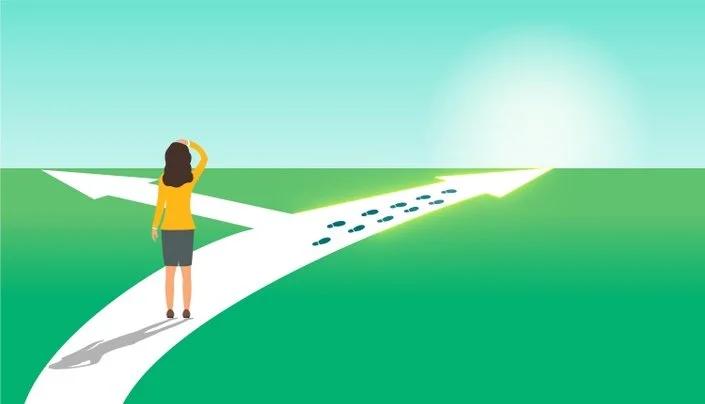The " impalpable" of magic spaces.
/The act of faith is a cognitive process that can be independent of the individual's religiosity and can trigger not only a series of emotional and psychological but also physiological effects. For more than a century, medical-scientists have been trying to empirically explain cases labeled as miraculous or self-suggesting, but only in the last few decades they have been receiving trustworthy evidence and widespread consensus.
Procession with torchlights for Saint Romedio (Trentino- italy) - Photo by Nicola de pisapia
In the book "The Voyage to Lourdes," the French author Alexis Carrel, Nobel Prize for Medicine in 1912, tells about a case of inexplicable healing where a woman destined to certain death miraculously heals from tubercular peritonitis. Carrel, self-proclaimed agnostic until then, defines the case as a self-healing manifestation made possible by "acceleration of the process of organic repair", likely to be the effect of the triggering force of the act of prayer and ecstatic state. His hypothesis about self-healing does not find any recognition and consensus in the research world at the time, and it is only at the beginning of the new millennium, more than fifty years after his death, that new structured research projects start about how the brain functioning in moments of deep faith and tranquility. Particularly distinguished is the group of R. Davidson who manages to prove the beneficial effects of meditation: what is initially defined as cutting edge science gradually becomes an increasingly important strand of neuroscientific disciplines.
But what has this to do with the environment and, therefore, with architecture?
If you are reading this article, you are very likely to have already come across other readings of this blog, which explain the links between physical - and therefore mental - stress and some negative environmental factors. We have already discussed how environments can turn out to be stressful or regenerative and comfortable, depending on the harmony of colors, lights, textures, geometries and sounds.
Falling garden - 50° Biennale of Venice . credits: Gerda Steiner and Jorg Lenzlinger
To create vibrant, extravagant, almost magical environments we should try to go beyond the concept of comfort and functionality when establishing the goals of an architectural project. If the approach is based on the simplistic addition of destabilizing and star-like elements there is the risk of creating redundant and annoying effects. However, there are many examples of successful architectural and natural spaces leaving a sense of wonder and positive that improve our spirituality, to the point we are incline to good mood and establish good relationship with the other and with ourselves. Example are provided not only by confined sacred places (temples and churches), but also by so many places that have no claim to celebrate an entity out of ourselves. If we deprived Lourdes of the attributes and meanings added after the Marian apparitions, and considered it a mere medieval village, we would still recognize the merit of offering a particular spectacle to its visitors, especially during the procession that winds along its hill. A sense of ecstasy and bliss is triggered by the shimmering of torches transported by river of the pilgrims in the background of a typical French late sunset light. Strong involvement and intense popular participation contributes to the choral sentiment of wonder and spiritual elevation, but it is the harmony of the various environmental elements of the background that conciliates everything in a supernatural effect. Creating a magical atmosphere, to arrange your mind to a certain form of naive belief is a mean to purify the minds from negative thoughts.
The church is just an ancient example of how a space can induce certain states of mind and with certainty we can state that even an atheist or agnostic does not remain indifferent to the atmosphere that such buildings infuse. Can we then assert, without risk of blasphemy, that also artistic/architectural installations may arouse similar feelings ?
Can we attribute to those spaces that magic that sets occupants to wonder?
Marvel is a state of mind similar to a particular state of attention, as it activates the same part of the brain - the frontal cortex - that is involved in an intellectual task. Wonder is a feeling common to all cultures and all ages, and it is stronger and more frequent in the infant, where it translates into excitement that makes the whole body move and set the baby in a state of total dependence. Creating a similar dependence in adults is a risk we run when stimulating certain mental states, but such a mistake can be easily avoided by accepting the supernatural element in its dreamlike dimension, where everything becomes credible regardless of the predisposition that each one has towards the inexplicable. Belief, swimming upstream and breaking the patterns of rationality, inebriates and helps not only on physical recovery processes during illness, but also encourages to break the rules and nurtures creativity. Awe and marvel trigger a series of positive effects on different performances: They help us to be more assertive, responsible, decisive and organized, in short, makes us healthier and therefore functional. Places equipped with areas dedicated to this kind of experience should become a requirement in urban and territorial planning, and in educational building regulation.
Look forward to that becoming soon reality.

















